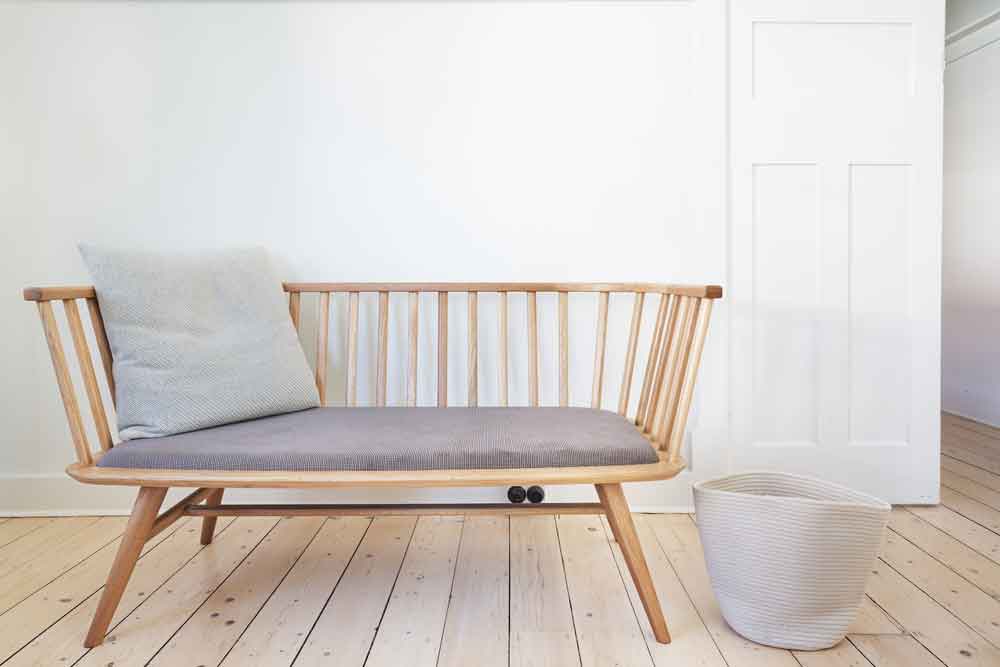How to Make a Bench Cushion
You can start cushioning a bench like any professional furniture maker by yourself, using the same tools and products! It's a relatively easy task that requires a thick foam padding, as well as any fabric that you prefer.
Chairs, couches, and benches are usually assembled beforehand until they are ready as frames. The cushions are made separately and are then attached to the frames before the assembled units leave the production facility. That means you can fashion and affix a cushion to any bench frame with just some adhesive, a staple gun, and your two hands.

Tools
You will need a table saw, a utility knife, some contact adhesive, an upholstery staple gun, a drill/driver, a pair of scissors, staples with a 3/8-inch crown and 1/4-inch legs, a 1.5-inch screw, as well as a 3/16-inch drill bit.
Materials
Prepare a 1.5-inch-thick dense foam, 3/4-inch plywood, and your chosen fabric.
Easy Steps to Follow
- Measuring and Cutting
First, measure the top of the bench. Use the table saw to cut the 3/4-inch plywood based on the benchtop size and measurement. Using the utility knife, cut the foam padding according to the same benchtop dimensions measured earlier.
- Adhesive Application
Apply a thick layer of contact adhesive on the plywood. Position the foam padding on top. With utmost care, place the foam squarely onto the plywood at a slow pace and secure. Remember that the contact adhesive will bond the foam and plywood immediately; thus, you will have difficulty in adjusting them once the adhesive dries.
- Position with Care
Position the plywood with the foam facing down and at the center of the fabric. Make sure that you have sufficient material to pull up and cover the sides, as well as to spread over the perimeter of the plywood by a minimum of 2 inches.
- Applying Pressure while Stapling the Sides
Compress the foam under the plywood by putting one or two knees as needed. Pull the cloth material up from a corner while stretching the fabric very tightly. Fasten the cloth to the plywood with a line of staples, then repeat the whole step on the next corner until you finish all four. Remember to apply pressure on the plywood throughout the entire process using your body weight.
- Stapling the Center
While making sure the fabric is centered from the sides, pull and stretch the cloth tight. Fasten the fabric with a line of staples. Repeat the steps to all sides while pressing the plywood with your body weight. Be sure to utilize the upholstery staple gun that fires staples with 1/4-inch legs and 3/8-inch crowns.
- Final Tightening of the Fabric
Stretch and pull the lingering areas with slack as you fasten the fabric with staples. Do short stretches each time, working throughout the plywood border so that you can tighten the cloth material evenly all over.
- Inspect for Other Areas with Slacks
Invert the cushion to inspect it. Look for any areas that appear to have any slack, or contain small pleats or ridges. Mark the areas near the bottom, and turn the pad over. Press it with your weight, then pull and stretch the seams and pleats out as you go about fastening the fabric with staples. Repeat the whole process until you are satisfied that there are no more slacks on the cloth material.
- Trimming
Start trimming off the excess fabric. Using a drill/driver, proceed to drill 3/16-inch holes through the benchtop spread out every 12 inches along its length, and 2 inches from the side.
- Secure the Screws
Invert the bench carefully onto the top of the cushion. Adjust both components squarely with the sides. Put the 1.5-inch screws into the holes. Drive the screws using the drill/driver into the cushion bottom to attach it securely to the bench.
Additional Tip
In case you prefer not to affix the cushion permanently onto the bench frame, you can attach adhesive fasteners or velcro straps at the cushion bottom and onto the bench.
Warning
Be mindful of the screw depth before you affix the cushion onto the bench. Ensure that they will not protrude through the thickness of the cushion.